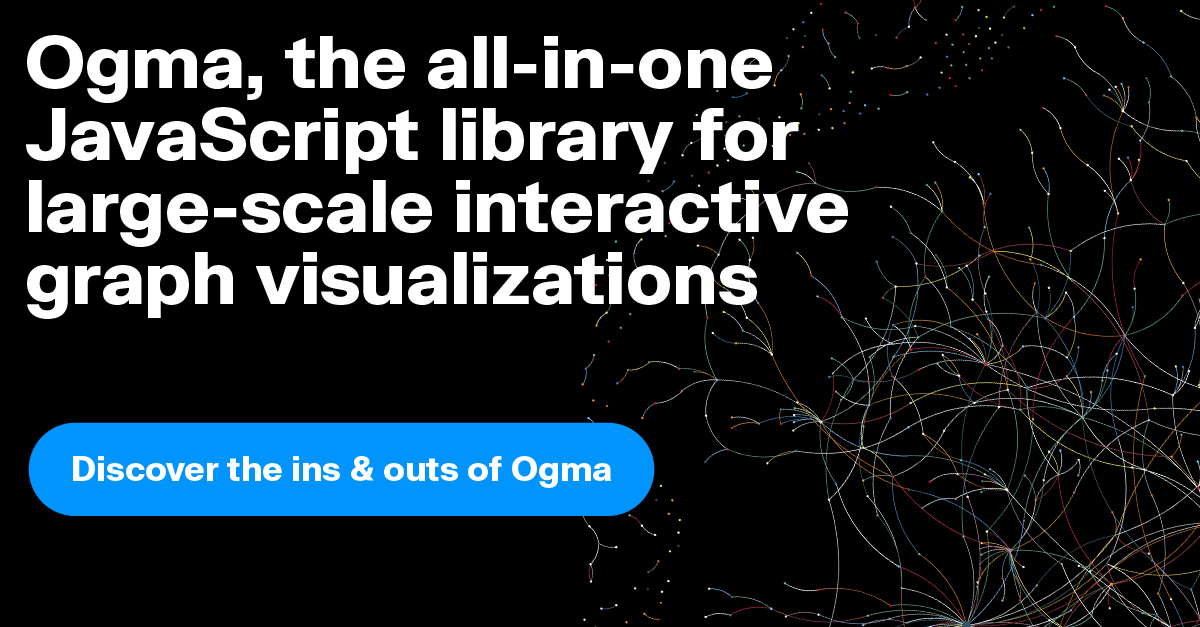From tables to networks: Visualize your Oracle Database 23ai as a graph with the Ogma Oracle connector
You can now easily generate graph visualizations from your Oracle database. The Ogma Oracle connector lets you render visualizations of your SQL Property Graphs in Oracle Database 23ai in just minutes. No need to rewrite your Oracle queries or transform the result into a custom format. All you need to do is pass your query to the plugin and you are good to go.
Whether you need to use your Oracle data to quickly visualize complex networks of transactions or understand your full network of suppliers at a glance, you can now do so using Ogma, the high-performance JavaScript graph visualization library from Linkurious.
Oracle Database 23ai brings AI-first features inside the database engine. It offers scalability, performance, security, and availability, and lets users embed AI workflows in the same core database rather than relying on a separate AI data store.
With Ogma, you can get visibility and faster insights from your Oracle data. Ogma lets you quickly display large datasets in seconds so you can grasp the full context of complex, connected data and increase your productivity.
The ability to visualize the networks and connections within your Oracle Database 23ai data gives you another way to unlock its potential.
- See connections, clusters, anomalies, or flows that are difficult to spot in tabular form, so you can get the most out of the rich relationships in your data.
- Bridge heterogeneous data models to work with a unified visual narrative of nodes, edges, and properties.
- Make insights accessible and actionable for all analysts, whether or not they’re fluent in SQL.
The Ogma Oracle Connector makes it possible to quickly visualize your SQL property graphs. The new connector uses the SQL/PGQ standard (ISO/IEC 9075-16:2023) to communicate with the database and allows you to display interactive graph visualizations and easily traverse connections in data.
The first step is to create your Oracle Database 23ai free instance. Oracle provides tutorials on how to create Property Graphs in your Oracle Database. Then, you can start retrieving your nodes and edges from the database in Node.js. To do this, you’ll need to install Ogma, the Oracle Database 23ai, and ogma-oracle-parser. From here, you can access your database and run your queries.
The connector comes with two main tools:
- A function to run any SQL/PGQ query and return the result as a JSON graph format that Ogma understands
- A typescript definition script generator, allowing you to quickly get the proper types for your nodes/edges data, using your database schema as an input. Essentially, it works like a little Prisma.
See the full, step by step Ogma Oracle Connector instructions here.
Ogma is purpose-built for large-scale, interactive graph visualization. It combines performance and scalability to help teams build graph-powered applications in weeks, not months. Ogma comes with a complete set of features for rendering, exploring, and customizing large graphs. These functions are designed to help developers build meaningful visualizations without reinventing core components.
Ogma features WebGL rendering, so it can smoothly handle fast layout algorithms, even with millions of nodes. This versatile graph visualization library can get you from an API call to a fully interactive graph in minutes.
See for yourself everything Ogma can do.
A spotlight on graph technology directly in your inbox.
